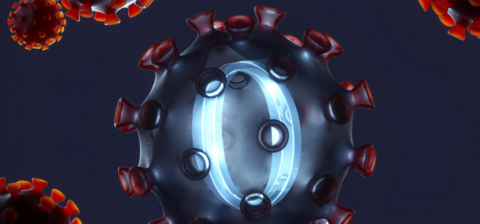
Q and A with the experts: COVID-19 variants
Omicron is the latest COVID-19 variant of concern, and it is expected to change the course of the pandemic. But how are variants formed, and what’s the threat level for people who are fully vaccinated? Kelly Grindrod, a pharmacist and professor, and Trevor Charles, a professor in the University of Waterloo’s Department of Biology, provide answers to these questions.
How are COVID variants formed?
Variants are formed through the natural process of evolution. Every time the virus makes a copy of itself, there is a chance mistakes occur. These mistakes result in mutations, which are detected through genetic sequence analysis, and allow the designation of variants that carry shared mutations. While many of those mutations do not change the virus characteristics, some of the mutations can change the virus properties such as transmissibility, disease severity, and immune escape. The resulting variants that carry these mutations are classified as variants of concern.
With these new variants, what does it mean for people already fully vaccinated?
Read the full Q and A on Waterloo News.